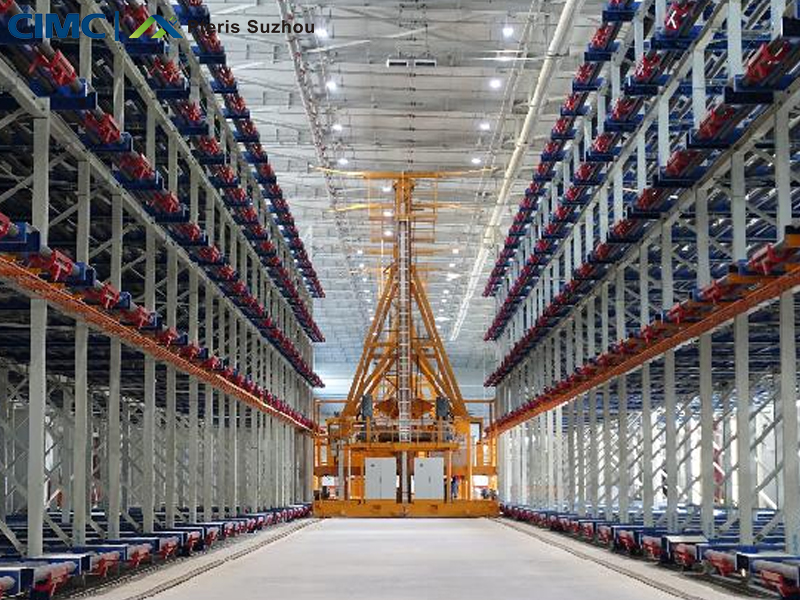Are you tired of dealing with the hassle and risks associated with manual cargo handling? If so, it’s time to consider implementing a cargo handling system. Not only will this technology improve safety and efficiency, but it can also lead to significant cost savings for your company. In this blog post, we’ll explore five benefits of implementing a cargo handling system that will revolutionize the way you transport goods. Get ready to transform your operations from safety to savings!
Introduction
Cargo handling systems are an important part of any warehouse or distribution center. They help to keep track of inventory and ensure that products are safely and securely stored. There are many benefits to implementing a cargo handling system, including increased safety, efficiency, and cost savings.
Safety is always a top priority in any workplace. Cargo handling systems can help to reduce the risk of accidents by providing a safe and organized way to store and move products. This can lead to fewer injuries and less downtime due to accidents.
Efficiency is another key benefit of cargo handling systems. By streamlining the storage and retrieval process, these systems can help warehouses or distribution centers operate more smoothly and efficiently. This can lead to reduced shipping times and improved customer satisfaction.
Cargo handling systems can also help businesses save money. These systems can help businesses optimize their use of space, leading to reduced costs for rent or utilities. Additionally, by improving efficiency, cargo handling systems can help businesses avoid costly delays or errors in their operations.


What is a Cargo Handling System?
A cargo handling system is a set of machines and equipment used to load and unload cargo from ships, airplanes, and trucks. There are many different types of cargo handling systems, each designed for a specific type of cargo. The most common type of cargo handling system is the container crane, which is used to load and unload shipping containers from ships. Container cranes are usually located at ports, where they are used to load and unload container ships. Other types of cargo handling systems include bulk material handling systems, unit load systems, and break bulk systems. Bulk material handling systems are used to handle large quantities of dry materials such as coal, ore, and grain. Unit load systems are used to handle smaller quantities of packaged goods such as boxes, bags, and barrels. Break bulk systems are used to handle large pieces of machinery or other heavy equipment.
Benefits of Implementing a Cargo Handling System
There are many benefits to implementing a cargo handling system in your business. Perhaps the most obvious benefit is the increased safety of your employees. With a cargo handling system in place, your employees will no longer have to lift heavy boxes or containers by hand. This can help prevent back injuries and other musculoskeletal disorders that can occur from manual lifting.
In addition to improved employee safety, a cargo handling system can also lead to significant cost savings for your business. For example, you will no longer need to purchase lifting equipment or pay for employee training on how to safely lift heavy objects. You may also find that your insurance premiums decrease once you have a cargo handling system in place. All of these cost savings can add up to significant savings for your business over time.
Enhanced Safety Measures
When it comes to cargo handling, safety is always the top priority. A good cargo handling system will have enhanced safety measures in place to ensure that all goods are handled safely and securely. This can include things like CCTV systems and sensors, which can help monitor activity and prevent accidents.
improved productivity
There are many benefits to implementing a cargo handling system, but one of the most important is improved productivity. A well-designed system can help workers move more quickly, efficiently, and with less effort. This can lead to increased output and profits for businesses. In addition, a good system can help reduce accidents and injuries, which can further improve productivity by reducing downtime and lost work hours.
Increased Efficiency
The first benefit of implementing a cargo handling system is increased efficiency. By automating the process of loading and unloading cargo, businesses can improve their turnaround time and get their products to market faster. This can lead to significant cost savings as well as improved customer satisfaction. In addition, automated systems can help reduce errors and improve safety by eliminating potential hazards associated with manual loading and unloading procedures.
Cost Savings
A cargo handling system can help your business save money in a number of ways. First, it can help you improve your efficiency and accuracy in loading and unloading cargo, which can save you time and money. Second, it can help you reduce damage to cargo, which can save you money on repairs or replacements. Third, it can help you improve safety in your facility, which can lower your insurance rates. It can help you meet government regulations more easily, which can save you money in fines or penalties.
Streamlined Logistics Management
A cargo handling system can save your business time and money. By automating the process of loading and unloading goods, you can reduce the need for manual labor. This can lead to fewer accidents and injuries, as well as improve efficiency and productivity. In addition, a cargo handling system can also help optimize space utilization, which can further reduce costs.
Conclusion
Implementing a cargo handling system can drastically improve the safety and efficiency of your business. With improved tracking, automated processes, and cost savings, you’ll be able to keep up with customer demands while ensuring that your products arrive safely at their destination. Investing in a cargo handling system is an investment in both the short-term success of your business and its long-term vitality.
